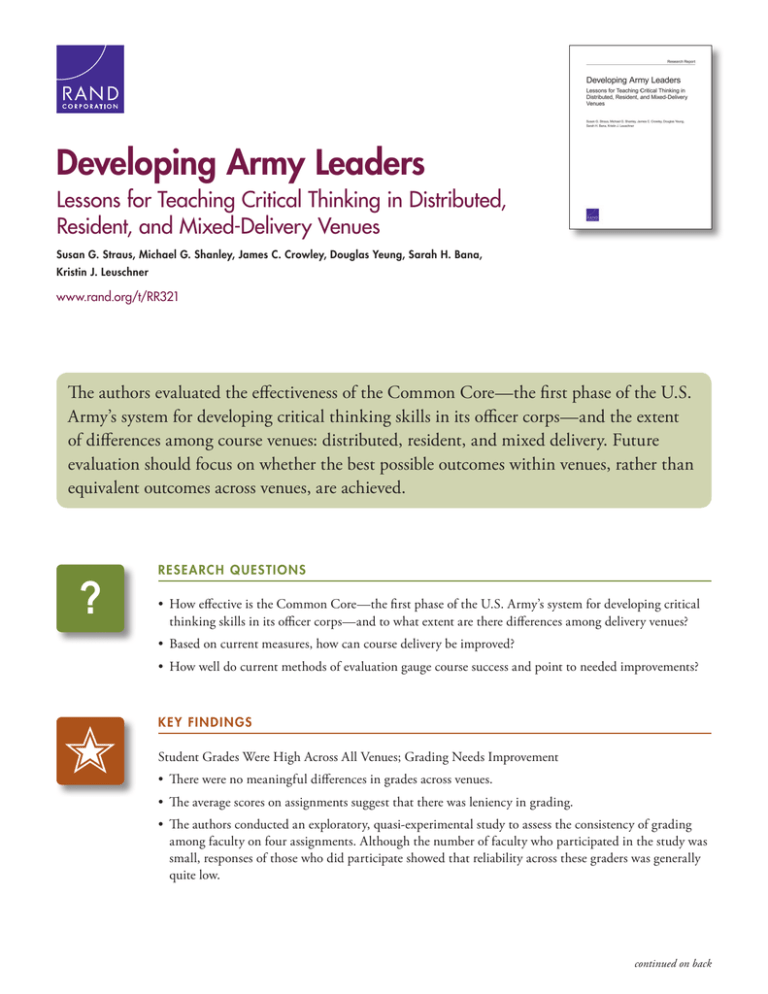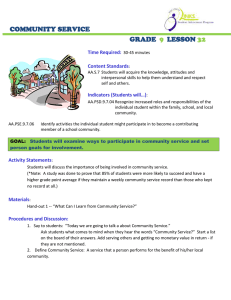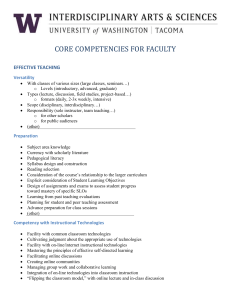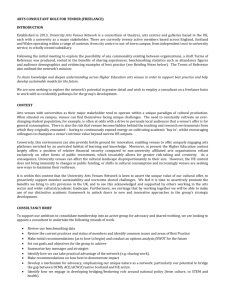Developing Army Leaders Lessons for Teaching Critical Thinking in Distributed,
advertisement

C O R P O R AT I O N Developing Army Leaders Lessons for Teaching Critical Thinking in Distributed, Resident, and Mixed-Delivery Venues Susan G. Straus, Michael G. Shanley, James C. Crowley, Douglas Yeung, Sarah H. Bana, Kristin J. Leuschner www.rand.org/t/RR321 The authors evaluated the effectiveness of the Common Core—the first phase of the U.S. Army’s system for developing critical thinking skills in its officer corps—and the extent of differences among course venues: distributed, resident, and mixed delivery. Future evaluation should focus on whether the best possible outcomes within venues, rather than equivalent outcomes across venues, are achieved. ? Rese arch Q u es ti o ns • How effective is the Common Core—the first phase of the U.S. Army’s system for developing critical thinking skills in its officer corps—and to what extent are there differences among delivery venues? • Based on current measures, how can course delivery be improved? • How well do current methods of evaluation gauge course success and point to needed improvements? ✭ K e y Fi n d i n gs Student Grades Were High Across All Venues; Grading Needs Improvement • There were no meaningful differences in grades across venues. • The average scores on assignments suggest that there was leniency in grading. • The authors conducted an exploratory, quasi-experimental study to assess the consistency of grading among faculty on four assignments. Although the number of faculty who participated in the study was small, responses of those who did participate showed that reliability across these graders was generally quite low. continued on back Future Evaluation Should Focus on Whether the Best Possible Outcomes Within Venues, Rather Than Equivalent Outcomes Across Venues, Are Achieved • The authors found few meaningful differences in students’ self-assessed learning and course grades among the three venues. • These results should not be interpreted to mean that the venues are equally effective or that differences do not exist. • Although the learning goals are the same, the venues are designed to support different student environments and needs. To Do R ecomm en dati o ns • The Command and General Staff School (CGSS) should continue to examine grading practices and, if needed, provide professional development to ensure that faculty grade to a common standard. • CGSS should investigate the use of blended learning strategies, such as those used in their Advanced Operations Course, to provide Advanced Distributed Learning students with opportunities for instructor and peer interaction. • CGSS should address technical issues with access to and functions of online courseware. The demands of Phase II on The Army School System students also warrant further investigation, along with consideration of mitigation strategies such as changes in course structure. • Surveys used in the Common Core should be modified to obtain more diagnostic information: • Assess self-efficacy questions before and after training in combination with individual-level explanatory variables to assess training effectiveness. • Move from five- to six-point response options for close-ended questions to increase variability in responses. • Analyze responses to open-ended questions to better understand students’ experiences in the course and to improve future surveys. • Use web analytics, such as time spent on online lessons, to assess student behavior in the course and its association with performance in training. • CGSS should survey course graduates and their supervisors to assess the impact of training on subsequent job performance. A RRO YO CENT ER RAND Arroyo Center is the Army’s federally funded research and development center for studies and analyses. Its mission is to help Army leaders make decisions that are informed by objective, high-quality analysis. For more information visit Arroyo’s website at www.rand.org/ard.




